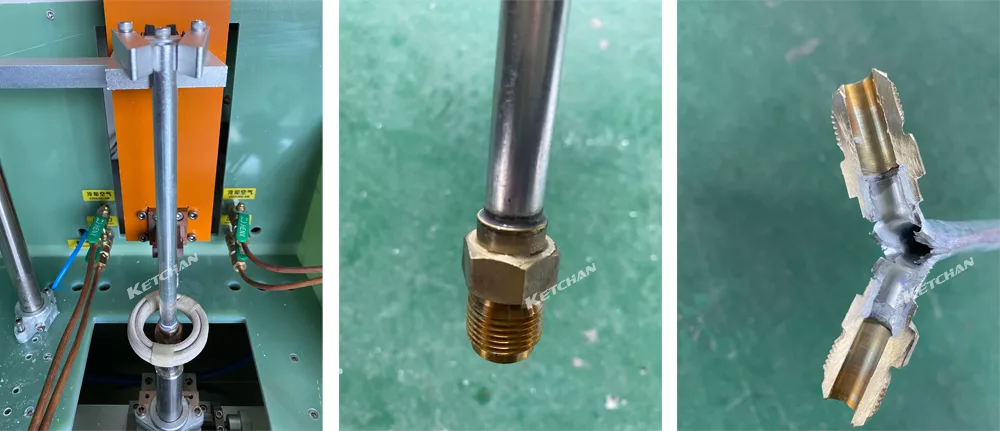High Frequency Brazing Copper and Aluminum
Copper to Aluminum Brazing
Induction Brazing Brass and Aluminum
Induction brazing copper to aluminum is a process for joining these two dissimilar metals with a filler material that melts, flows, and wets the metals’ surfaces at a temperature that is lower than the melting temperature of the two metals. Induction heating is a method of brazing that uses an electromagnetic field to heat the parts rapidly and precisely. Induction brazing copper to aluminum requires a foil interlayer to bond the metals at 600°C for 2 seconds under a bonding pressure of 9 MPa. The joint can be cleaned with flux or a covering gas to prevent oxidation. Induction brazing copper to aluminum can produce strong and stable joints that can withstand bending and tensile tests.
What are the applications of induction brazing copper to aluminum?
Induction brazing copper to aluminum has various applications in different industries. Some examples are:
- Brazing copper pipe to aluminum joint for air conditioning or refrigeration systems.
- Brazing aluminum adaptors to the end of aluminum tubes for bicycle manufacturing.
- Brazing aluminum electrical lug assembly for electrical connections.
- Brazing aluminum wires and strips for coating removal or screen making.
- Brazing aluminum manifold for off-road vehicles.

What are the advantages of induction brazing copper to aluminum?
- Induction brazing is faster, more precise, and more energy-efficient than other brazing methods such as a torch or furnace brazing.
- Induction brazing reduces part distortion and joint stress, as it only heats the area needed for brazing.
- Induction brazing eliminates the need for a skilled operator, as it can be easily integrated into a production line and controlled by a timer or temperature sensor.
- Induction brazing improves the quality and reliability of the brazed joints, as it prevents oxidation and ensures consistent heating and wetting of the filler material.
- Induction brazing is safer than using an open flame or a hot furnace, as it reduces the risk of fire or burns.
What are challenges of induction brazing copper to aluminum?
- Copper and aluminum have different coefficients of thermal expansion and thermal conductivity, which can cause cracking or breaking of the joint if not properly controlled.
- Copper and aluminum have different melting points, which can make it difficult to heat them evenly and avoid overheating or melting of the aluminum.
- Copper and aluminum have different surface oxidation rates, which can affect the wetting and bonding of the filler material if not properly cleaned or fluxed.
Since 2000, we have served thousands of users in the induction brazing field, for more inquiries, contact us now.
Tags:High Frequency Brazing, induction brazing, induction brazing AC pipes, induction brazing aluminum, induction brazing copper, induction brazing equipment, induction brazing hvac, induction brazing HVAC pipes, induction brazing machine, induction brazing radiator tubes, induction brazing system, induction heater, induction heating, induction heating machine, KETCHAN, Manufacturers, price, Suppliers, Zhengzhou KETCHAN, Zhengzhou KETCHAN Electronic
